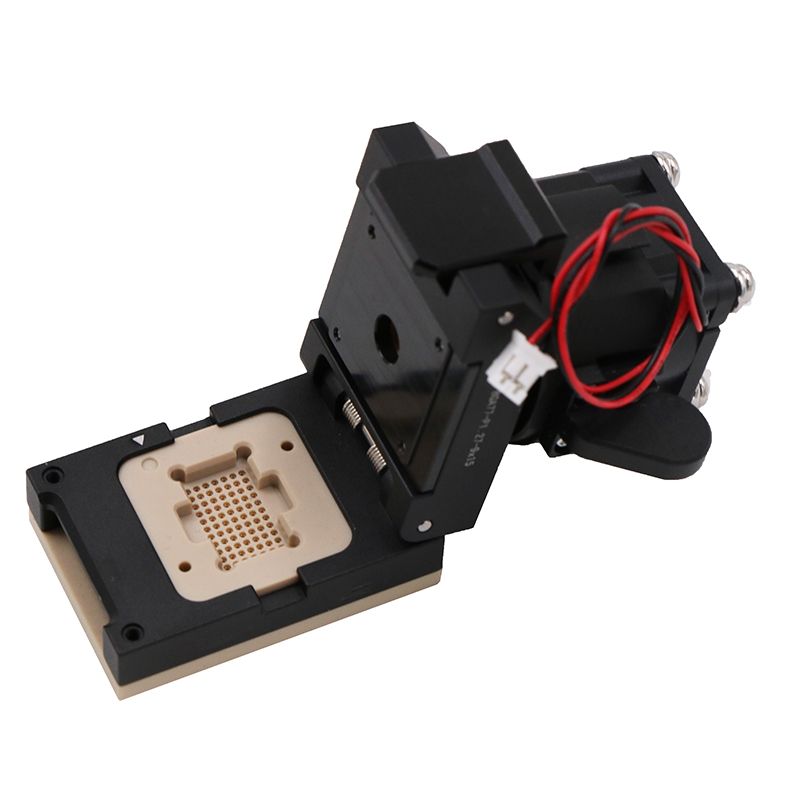Ordering and producing a customized socket for personal test requirements typically involves several steps to ensure you get the right product that meets your specifications:

- Define Your Requirements: Clearly outline what you need the socket for. Consider factors such as the type of device or component you’re testing, the required specifications (such as voltage rating, current capacity, pin configuration, Pin pitch, IC size, test frequency, and other test info), and any special features or requirements.
- Research Suppliers: Look for suppliers or manufacturers who specialize in producing custom sockets or connectors. You can search online, check industry directories, or ask for recommendations from colleagues or industry forums.
- Contact Suppliers: Reach out to potential suppliers with your requirements. Provide detailed specifications including:
- Pin configuration (number of pins, pitch, layout)
- Material requirements (for example, should it be heat-resistant?)
- Electrical specifications (voltage rating, current rating)
- Mechanical specifications (dimensions, tolerance levels)
- Quantity needed
- Request Quotations: Ask for quotations from multiple suppliers. Compare pricing, lead times, and their ability to meet your specifications. Ensure the supplier is capable of producing sockets in the quantity you need.
- Review Samples (if possible): Some suppliers may offer samples or prototypes for testing before committing to a larger order. This can help ensure the socket meets your requirements before full-scale production.
- Place Order: Once you’ve selected a supplier, place your order. Make sure the order includes all agreed-upon specifications, pricing, delivery terms, and any other relevant details.
- Production and Delivery: The supplier will manufacture the sockets according to your specifications. Monitor the production progress if necessary, and coordinate delivery or pick-up arrangements.
- Testing and Validation: Upon receiving the sockets, conduct testing to ensure they meet your expectations and function correctly with your testing equipment or devices.
- Feedback and Adjustments (if needed): Provide feedback to the supplier based on your testing results. If adjustments are necessary, communicate these promptly to ensure corrections are made.
- Documentation and Support: Ensure you receive proper documentation such as specifications, drawings, and any warranty information. Maintain a good relationship with the supplier for ongoing support or future orders.

By following these steps, you can effectively order and produce a customized socket that meets your personal test requirements.
发表回复